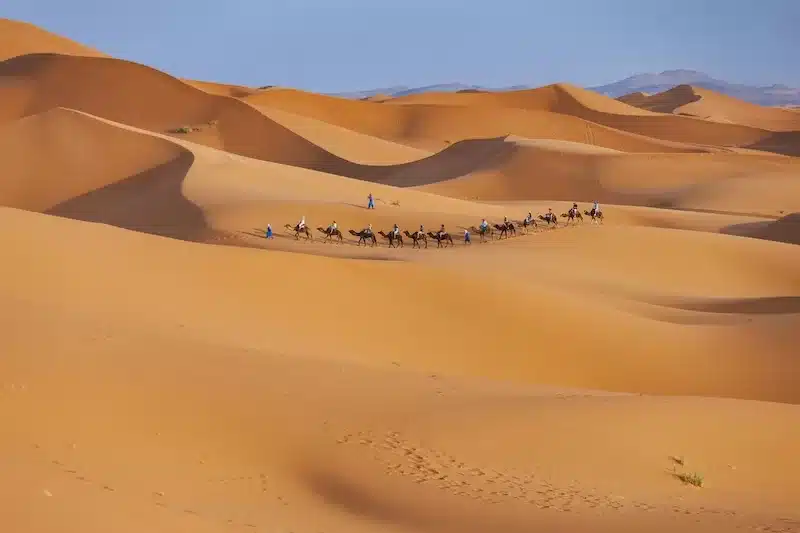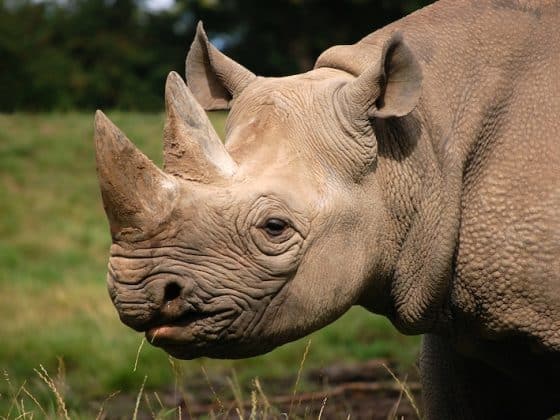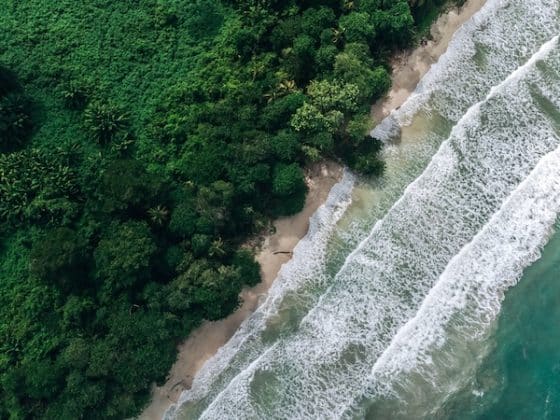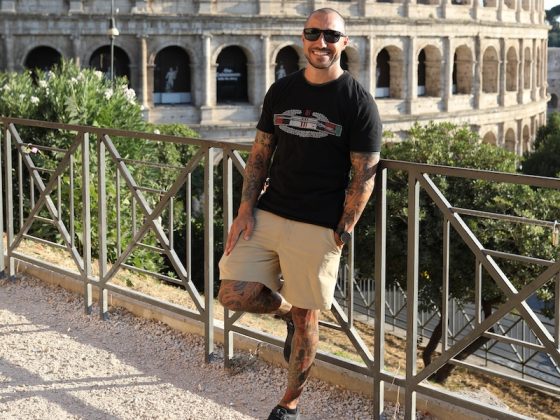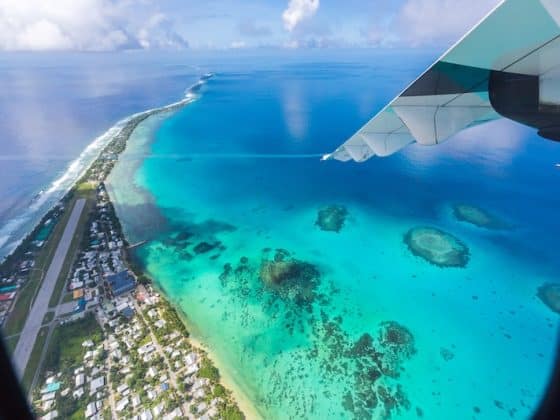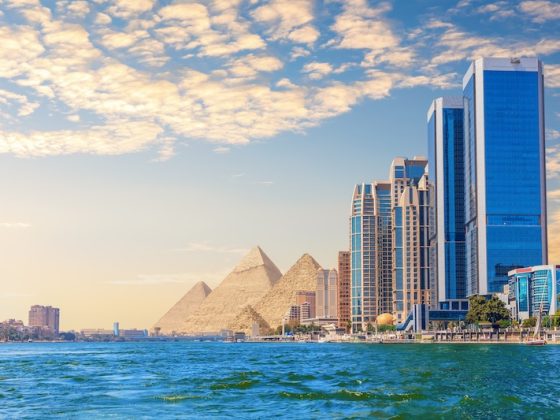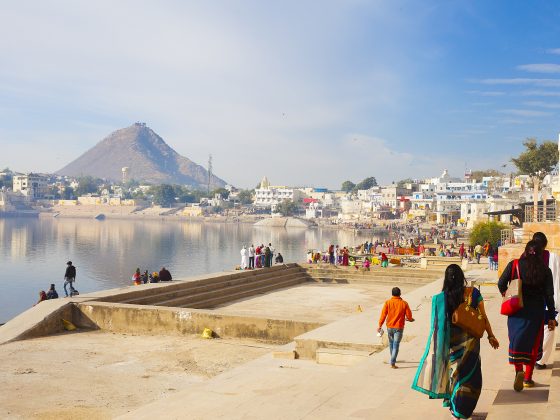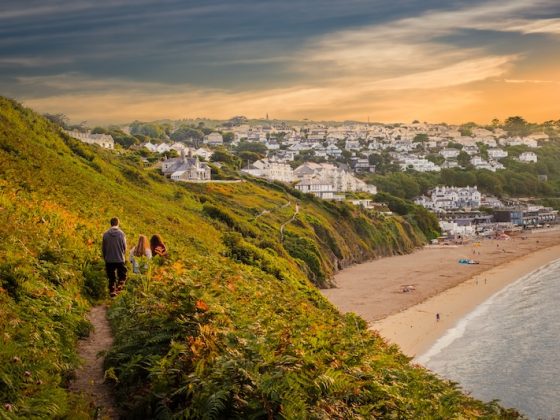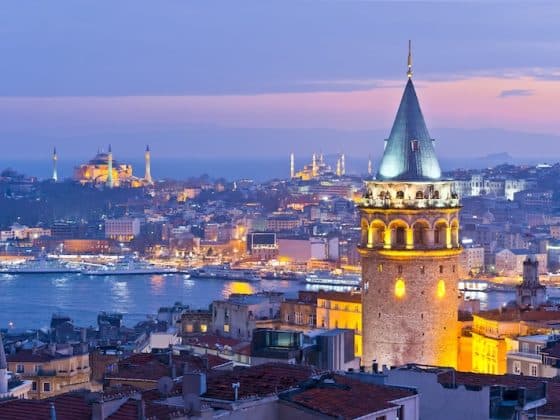Did you know that you actually cannot see the Great Wall of China from space? This is a popular urban myth. Sometimes, under very specific circumstances—when the weather is just right and with specialised camera equipment—it is possible to make it out somewhat from low orbit, but to say that it is visible from space is not true.
There is, however, a man-made wall that is visible from space, and its story is bound to one of Africa’s most enduring conflicts. It runs through the vast, windswept expanses of Western Sahara—a place of striking desert beauty, sparse population, and deep political division. Often referred to as “Africa’s last colony,” Western Sahara sits on the northwest coast of the continent, larger than the United Kingdom yet home to just over 600,000 people. For decades, it has been locked in a struggle over self-determination, its fate disputed between Morocco and the Sahrawi people.
The Moroccan Western Sahara Wall
The Moroccan Western Sahara Wall, also known as the Berm, was built by Morocco between 1980 and 1987 during its conflict with the Polisario Front, a group fighting for Western Saharan independence. The wall was built with sand and stone to secure the areas of Western Sahara still under Moroccan control and protect them from attacks. It stretches about 2,700km and is surrounded with barbed wire, trenches, and landmines.
It may not have the architectural grandeur of the Great Wall of China, but the Berm’s sheer scale is staggering—an immense barrier born of a real and unresolved conflict. For the Sahrawi people, it is not just a line in the sand, but a physical scar across their homeland, separating families, communities, and cultures.
Read more like this: I Didn’t Mean to End Up in Morocco: One woman’s journey
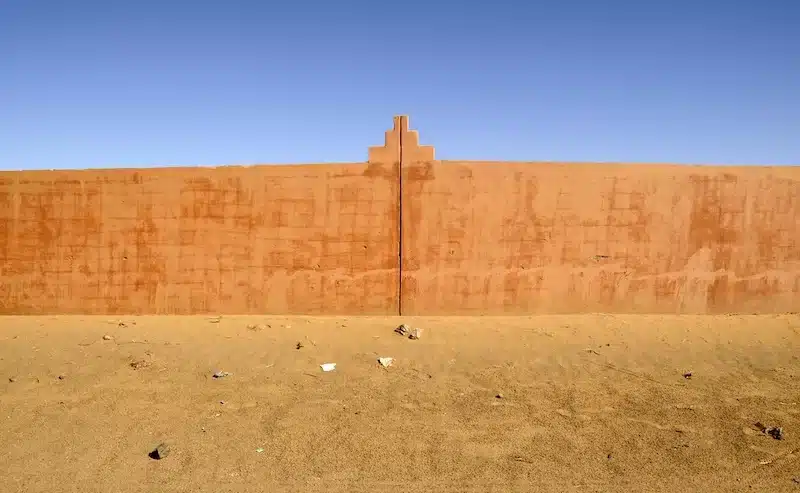
A Land Divided
The Berm cuts Western Sahara in two, marking more than just a geographic divide. To the west lies the Moroccan-administered zone, containing most of the region’s towns, infrastructure, and natural resources. To the east, beyond the wall, is territory controlled by the Polisario Front—largely desert, but symbolically vital to the independence movement.
The United Nations lists Western Sahara as a “non-self-governing territory,” meaning it exercises no sovereignty of its own but is not formally recognised as part of Morocco. Around 40 to 45 UN member states recognise the Sahrawi Arab Democratic Republic (SADR), though the extent of recognition varies—some acknowledge only part of the territory, others see it as autonomous within Morocco, and some, like Algeria, South Africa, Cuba, and Vietnam, recognise it fully as independent.
From Spanish Sahara to Stalemate
Western Sahara’s story as Africa’s last colony began in the late 19th century, when Spain claimed the region and named it Spanish Sahara. For nearly a century, resistance was minimal—until 1973, when the Polisario Front emerged. This paramilitary group of ethnic Sahrawis sought to create an independent state and launched a militant campaign against Spain.
Spain, meanwhile, was in political turmoil. When dictator Francisco Franco died in 1975, Spain withdrew from Western Sahara. But instead of independence, the territory was claimed and divided by Morocco and Mauritania.
The UN condemned the move, and the International Court of Justice ruled that neither country had valid sovereignty over the land. Morocco ignored the ruling, launching a policy of settler colonialism—sending roughly 350,000 Moroccan civilians into the territory. Mauritania attempted its own occupation but withdrew in 1979, leaving Morocco to take over those areas as well.
The Polisario Front kept up a guerrilla campaign, declaring the Sahrawi Arab Democratic Republic. In 1991, a UN-brokered ceasefire was agreed, with the promise of a referendum on self-determination. That referendum has never taken place.
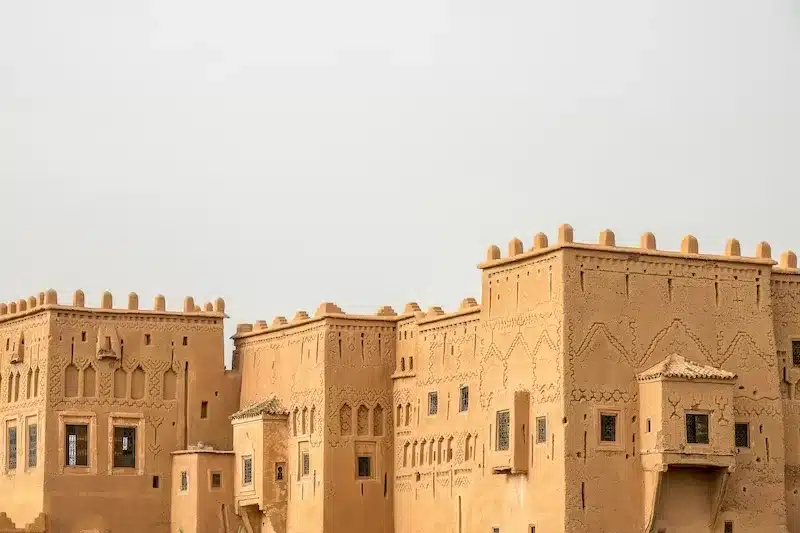
The Present Reality
Today, Morocco controls around 70% of Western Sahara, including all major towns and most natural resources. The Polisario Front holds the remaining 30% to the east of the Berm. Tens of thousands of Sahrawis live in refugee camps in Algeria.
Morocco says it’s willing to offer the territory self-governing autonomy—but only within the Moroccan state. The Polisario Front maintains they will not abandon the fight until a referendum on full independence is held.
The African Union recognises the SADR’s independence; the UN still lists the territory as “awaiting decolonisation.” The conflict remains low-intensity, though flare-ups occur—most recently in 2020, when the ceasefire collapsed and sporadic fighting resumed.
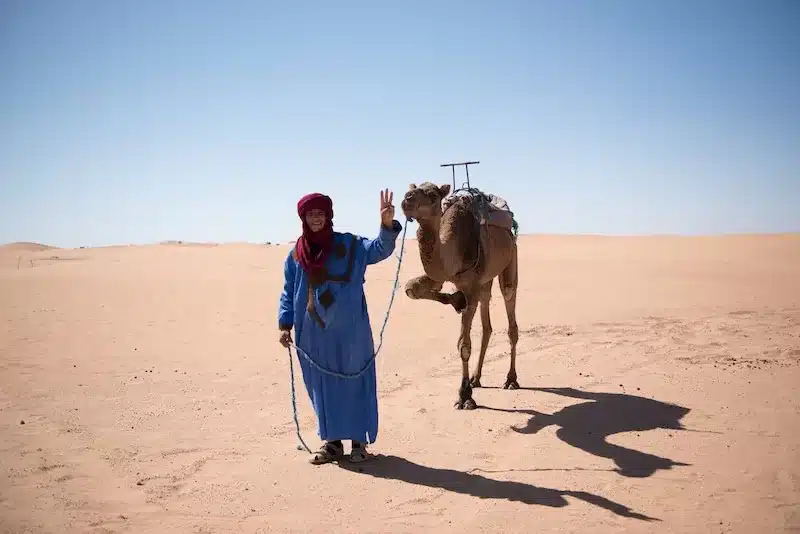
Visiting Western Sahara
Tourism might not be the first thing you associate with a disputed territory, yet Western Sahara receives a steady stream of visitors. In Moroccan-administered areas, travel is straightforward—public buses, tours, and even holiday resorts operate freely, with only the occasional military checkpoint.
Laayoune, seen by many as the SADR capital but administered by Morocco, is the largest city. Dakhla, where the Sahara meets the Atlantic, is a star attraction—renowned as one of the world’s best kitesurfing spots, but also home to fishing trips, yoga retreats, and laid-back beach life. These areas feel safe and welcoming, though travellers are cautioned against approaching the Berm, where tensions are higher.
The Sahrawi people’s culture is distinct from Morocco’s, shaped by desert traditions and resilience. Handmade crafts, bustling markets, and the ritual of pouring tea high into small glasses are central to their identity.
Western Sahara is generally considered safe to visit, but political sensitivities run deep. International organisations still regard it as a colonised territory, and many locals reject the status quo. Some human rights advocates question whether tourism here risks legitimising Morocco’s control. Travel guides often suggest supporting Sahrawi-run businesses and avoiding those tied to the Moroccan state.
Read more like this: The New Africa Travel List
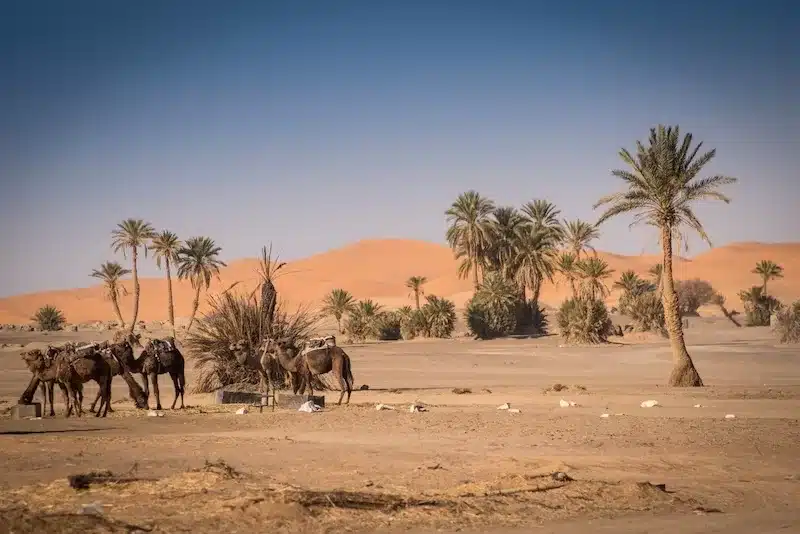
What Lies Ahead?
Western Sahara remains one of the world’s most intractable territorial disputes. After decades of conflict and diplomacy, the stalemate between Morocco and the Polisario Front endures. Morocco continues to invest in infrastructure and resource extraction, while the Sahrawi people still wait for the referendum they were promised over 30 years ago.
In the short term, full independence looks unlikely. The territory remains in limbo—rich in natural resources, with a growing tourism sector, yet without self-determination. Much of the wealth generated here flows to Morocco.
Despite the relative calm, Western Sahara’s future is still uncertain. Its people live with one foot in the present and one in a promised future that has yet to arrive. Until that changes, it will remain a land divided—its beauty shadowed by an unfinished fight for freedom.
Read more like this: Somaliland, Africa’s Forgotten State
Stay Ahead on Every Adventure!
Stay updated with the Latest Travel News on Escape Artist. Get all the travel news, international destinations, expat living, moving abroad, Lifestyle Tips, and digital nomad opportunities. Your next journey starts here—don’t miss a moment! Subscribe Now!
FAQs on Western Sahara
Is Western Sahara a country in Africa?
Western Sahara is a disputed territory in North Africa. While the Sahrawi Arab Democratic Republic claims it as an independent nation, much of it is administered by Morocco.
Is Western Sahara safe?
Safety in Western Sahara varies by region. Moroccan-controlled areas are generally stable, but travel to the eastern, Polisario-controlled zones can be risky due to political tensions and landmines.
Where is Western Sahara?
Western Sahara lies on the northwest coast of Africa, bordered by Morocco to the north, Algeria to the northeast, Mauritania to the east and south, and the Atlantic Ocean to the west.
What is the capital of Western Sahara?
Laayoune (El Aaiún) is the largest city and de facto capital under Moroccan control, while the Polisario Front regards Tifariti as the capital in the areas it administers.
————-
Ethan Rooney is an Irish journalist covering global communities, culture, and niche movements. You can find more of his work here
Contact Author
"*" indicates required fields
